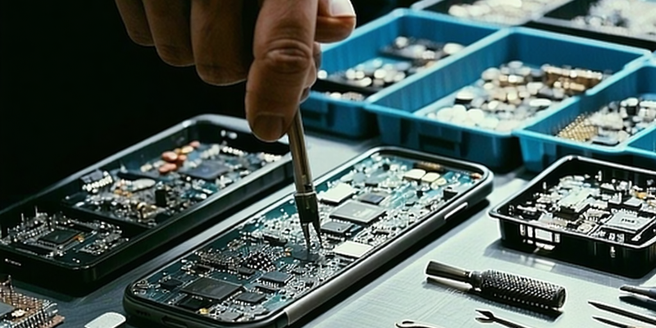Overview Of Smartphone Repairability Scores

Understanding Smartphone Repairability Scores
Smartphone repairability scores offer insight into how easy or difficult it is to fix a device when issues arise. These scores are determined by evaluating factors such as the availability of spare parts, the complexity of disassembly, and the clarity of repair manuals. A higher score indicates a more repairable phone, which can suggest longer device longevity and better sustainability, as fewer phones may end up in landfills as a result. Understanding these scores can help consumers make more informed decisions when purchasing a new smartphone, aligning with their values of sustainability and cost-effectiveness. The repairability score can also influence how manufacturers design their products, pushing them towards designs that are easier to repair. Increasing consumer awareness and demand for repairable devices can lead to changes in how electronics are manufactured and marketed.
Key Factors Influencing Repairability Ratings
A smartphone’s repairability rating is influenced by several key factors that determine the ease with which a device can be serviced. Key considerations include the modularity of components, which affects how easily parts like batteries or screens can be replaced without requiring specialized tools. The availability of spare parts at reasonable prices also plays a critical role, as does the presence of comprehensive repair manuals that provide clear instructions. Furthermore, the design itself may impact repairability, with some manufacturers opting for glued components over screws, complicating the disassembly process. Another important aspect is the availability of diagnostic and software tools for professionals and DIY enthusiasts alike. Consumer and third-party repair initiatives also highlight the importance of manufacturers supporting right-to-repair laws that encourage more repair-friendly designs. These elements together form the cornerstone of a smartphone’s repairability rating.
Comparing Repairability Across Popular Brands
Comparing repairability across popular smartphone brands reveals notable differences in approaches to design and serviceability. Some brands prioritize ease of repair by offering modular designs and providing detailed repair guides, while others may opt for more integrated designs that are more difficult to open and service. For example, companies like Fairphone are often cited for their high repairability scores due to their focus on modular, easily replaceable components. In contrast, brands that use proprietary screws and heavily glued components may score lower. This divergence is not just technical; it reflects varying corporate philosophies regarding consumer empowerment and product longevity. While some consumers are willing to pay a premium for repairable models, others prioritize features or design, regardless of repairability. This comparison is crucial for consumers dedicated to sustainability and cost effective, long-term ownership.
Impact of Repairability on Consumer Choices
Repairability is increasingly influencing consumer decisions in the smartphone market. Consumers today are more environmentally conscious and cost-aware, seeking devices that offer longevity through reparability. The ease of repairing a phone can significantly affect its total cost of ownership, making a repairable phone more attractive in the long run. Smartphones with high repairability scores often use standardized, non-proprietary parts, which reduces maintenance costs and makes DIY repairs feasible. Brands that promote repair-friendly models can cultivate a loyal consumer base appreciative of their commitment to sustainability. Additionally, consumers may perceive high repairability as a stand-in for quality and reliability, suggesting that the brand cares about the longevity of its products. This perspective is shifting the market dynamic, prompting manufacturers to rethink their design strategies to appeal to this growing demographic.
Future Trends in Smartphone Repairability
As the demand for more sustainable technology grows, future trends in smartphone repairability are expected to evolve rapidly. Several manufacturers are beginning to embrace more modular design philosophies, allowing complete component replacements as opposed to entire device swaps. There’s a potential shift towards standardized parts, making cross-brand repairs more feasible and affordable. Technological advancements are also likely to enhance diagnostic capabilities, simplifying problem identification and resolution, even for non-experts. Advocacy for right-to-repair laws is expected to gain momentum, potentially resulting in legislative changes that compel manufacturers to openly publish repair guides and ensure parts availability. As consumers push for more sustainability, industry players who invest in repairability innovations may gain a competitive edge, fundamentally changing the landscape of smartphone design and manufacturing in response to consumer demand for eco-friendly, durable products.